Chapter 4
Insight and Level 1: Connect
We were trying to make improvements to a software we use. I reached out to a tech firm and set up a call. The guy on the phone asks me how we’ve been using our software so I give him the big picture. Right off the bat he proceeds to tell me that the way we’ve been working with it is all wrong and needs to be rethought. He went on with some pitch about a whole new way to approach it that most people haven’t considered that’s creating major advances in results, but he lost me with his arrogance.
First conversation with him and he’s telling me what I should and shouldn’t do after barely asking me a question or two? Maybe they have some special sauce that’s better than the rest, but I’ll get help elsewhere from someone who knows how to talk to people.
—Vice president of account management at a multibillion-dollar companya
This seller may have started out on the right track but then promptly derailed. He believed that the buyer was doing something the old way and that his way was better. He tried to apply interaction insight by pushing back on the buyer’s thinking and current practices and then tried to open the door for opportunity insight, sharing a new way of doing things that would create value for the buyer.
Unfortunately, this seller’s attempt to display both types of insight fell apart with his poor tactical implementation. He failed in two fundamental ways:
- He didn’t make a personal connection with the buyer. Quite the opposite, he turned him off.
- He might have understood the needs of the buyer and that he had a better solution, but he failed to demonstrate both.
As we observe sellers attempting to practice insight selling, we see them make these mistakes all the time because many of them:
- Discount the importance of relationships and trust in their ability to be regarded as sources of insight.
- Dismiss the basic premises of solution and consultative selling.
- Fail with questions. They don’t ask enough questions (often because they’ve been told repeatedly in the last few years that solution and consultative selling are antiquated), don’t ask the right questions, don’t ask them the right way, and don’t listen well enough to the answers.
In this chapter, we look at how sellers connect with people and connect the dots and how connecting relates to insight selling (Figure 4.1). It’s not our intent, however, that this chapter be a primer on how to develop relationships or a new treatise on consultative selling. Instead, we focus on a few specific points.

Figure 4.1 Level 1: Connect
Regarding connecting with people, it’s trendy to dismiss the value of relationships, especially personal relationships (i.e., developing rapport and being likeable) in sales. We make an argument to the contrary, including outlining how personal connections improve sellers’ ability to deliver value and succeed with insight. We also provide a format for measuring the strength of relationships from the business perspective.
We cover connecting the dots in depth in Rainmaking Conversations: Influence, Persuade, and Sell in Any Situation.1 In this chapter, we focus specifically on how questions help demonstrate understanding of need—something winners are much better at than second-place finishers—and how sellers can use questions in the process of applying interaction insight.
In the appendix to Insight Selling, we provide an executive overview of RAIN Selling—RAIN Group’s selling method and guide for leading successful sales conversations. In addition, for readers of Insight Selling, we’ve made several complimentary e-learning lessons available if you want to learn more.
Connecting with People
Personal Connection or Business Value?
A relationship is the way in which two or more people are connected to one another. Ask people to define the role of a relationship builder in sales, and you’ll typically get one of two answers (Figure 4.2):
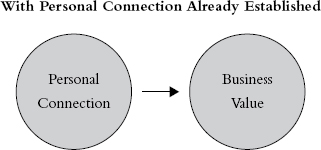
Figure 4.2 When Sellers Build Personal Connections, It Lays the Foundation for Trust and Opens the Door to Providing Maximum Business Value
- Relationships = connection based on affinity for and liking of one another (i.e., personal connection)
- Relationships = connection based on strength of business impact (i.e., business value)
Recently, it’s been popular to dismiss relationships, especially the personal connection component of the relationship, as unimportant in (and even detrimental to) sales.2 This isn’t what we found in our research and isn’t what we see in practice. Sellers who dismiss the value of relationships—personal connections included—have great difficulty succeeding with insight selling and establishing their business value.
Importance of the Personal Connection
In both our research and our conversations, buyers regularly stress to us that they are open to ideas and insights almost exclusively from people they already know and already trust. Sellers who have personal connections already developed with buyers find the door is open to provide business value (Figure 4.2).
This poses a challenge for sellers who do not yet have a personal connection with a buyer because there is a converse relationship (Figure 4.3) between the level of trust established and the buyer’s willingness to (1) take meetings with you and (2) accept what you say as credible.
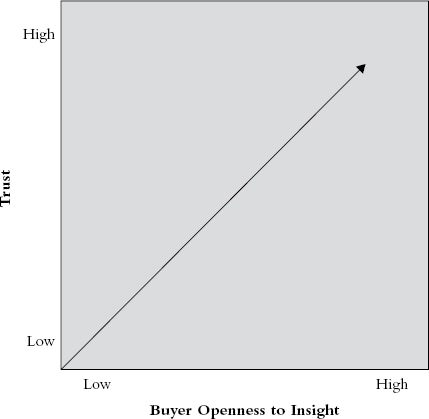
Figure 4.3 The More Trust You Build, the More Buyers Are Open to Gaining Insight from You
Why is this important?
- Personal connections and liking lead to trust. Thus the all-too-common advice these days to dismiss the value of making personal connections is ill-advised at best.
- Buyers report sales winners make strong personal connections at more than double the rate of second-place finishers (Figure 4.4).
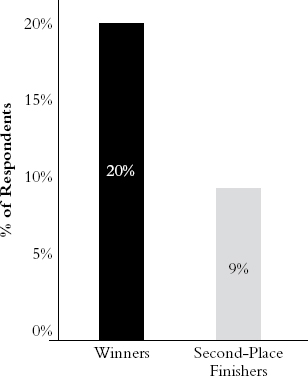
Figure 4.4 Sales Winners Make Strong Personal Relationships at More Than Double the Rate of Second-Place Finishers
Liking Leads to Trust
In “The Role of Interpersonal Liking in Building Trust in Long-Term Channel Relationships”3 published in the Journal of the Academy of Marketing Science, the authors found that liking leads to trust in seller-buyer relationships. Figure 4.5 shows the implications of this finding and others.
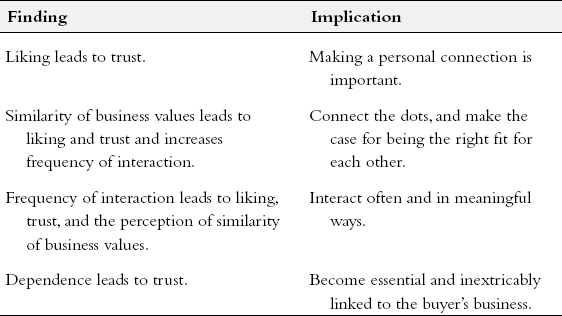
Figure 4.5 Role of Liking in Developing Trust
Moreover, they found that the more a seller interacted with buyers and the more buyers felt in synch with the business values of the seller, the more they liked the seller. As the authors put it, “The results suggest that liking is an important, and too long overlooked, variable in understanding trust. Regardless of the age of the sales relationship . . . liking has a major influence on trust . . . In other words, not only is liking an important determinant of trust in its own right, but the widely studied . . . [concepts of] similarity of business values and frequency of personal interaction—operate through liking.”
It all comes down to this: If you want buyers to listen to your ideas and see you as a source of insight, it’s a lot easier if they like you. It’s a lot easier if you establish—and then build upon—your personal connection.
Establishing Value, Then Building Personal Relationships
Now that we’re well into the second decade of the twenty-first century, business and relationships don’t operate like they did in the Mad Men days. There was a time when people expected to build a personal relationship first, and then, with the personal relationship firmly in place, they could do business.
Nowadays, business interactions often come first. Long dinners to get to know each other up front are the exception, not the rule, and we have neither seen nor heard of an actual three-martini lunch in a long time. This doesn’t mean, however, that sellers can’t establish personal relationships with buyers. It just happens in a different order.
When sellers can establish themselves as a source of insight from the moment of their first interactions, the buyers tend to want to keep them around. Even before they make their first sale to the buyer, sellers who win add this value through insight.
As they establish themselves and their business value, the frequency and depth of their interactions increase. Assuming the sellers are playing their cards right, a personal relationship with the buyer can then blossom. Once it does, it adds to both the foundation of trust and the buyers’ willingness to take the sellers’ advice (Figure 4.6).
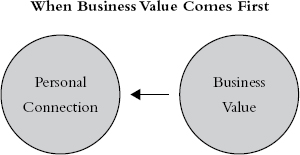
Figure 4.6 Seller Delivers Value But Leads Interactions in a Way That Builds Personal Connections. Personal Relationship Is the Outcome of Successful Business Interactions
From here, sellers can strengthen and deepen their relationships both personally and professionally and become an essential resource to buyers.
Becoming Essential
When we ask sellers to describe their relationships with their clients, they often say something like, “Relationships based on the value we provide are key to our success. In general, our relationships are strong and deep, especially for our most important clients.”
Dig a little deeper on the relationship front, however, and most sellers agree that although their standard answer is “strong and deep,” there’s a lot more going on when they look critically. To help our clients analyze the strength of their relationships with their clients, we ask them the following seven questions:
- How would your clients describe the importance of your relationship with them?
- How would your clients describe the level of partnership they have with your executive team in setting strategy and direction in areas where you are relevant?
- How would your clients describe your impact on their success?
- What would happen if your clients lost their relationship with you?
- If someone on your clients’ teams said to your main contacts, “Let’s consider replacing this vendor,” how would your clients react?
- What kind of competitive bidding processes do your clients put you through?
- Would your clients seek to replace you themselves?
Then rich conversations begin.
Once sellers plot their relationships in the grid in Figure 4.7 (which follows the questions above and is stated from the point of view of what the client would say), it’s difficult to close down the conversation about why the relationship is where it is, what can be done to strengthen it, and how much investment energy sellers should place in one client or another.
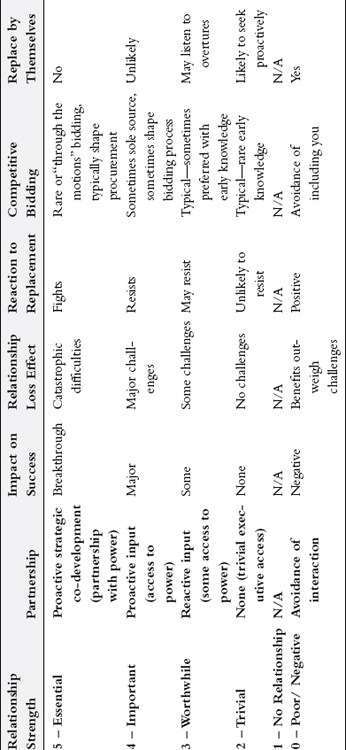
Figure 4.7 Relationship Strength
Most (but not all) of the sellers we encounter have at least one relationship where they find themselves, for the most part, at the top (essential) level. They say their clients would answer the questions something like this:
- Importance: “This relationship is essential to us.”
- Partnership: “We partner with them proactively at the highest appropriate levels when we are considering new strategies in the areas relevant to them.”
- Impact on success: “We get breakthrough results with them.”
- Relationship loss: “Losing our partnership with them would be catastrophic.”
- Reaction to replacement: “Not going to happen on my watch.”
- Competitive bidding: “Sometimes I have to go to bid, but they shape the requests for proposals with me. If I can swing it, I sole source to them.”
- Replace by themselves: “No.”
When we study relationships that reach the top level, what we find is that the sellers themselves have a significant impact on the buyer’s perception of the relationship. It’s almost never simply an exchange of products and services.
In particular, the more insight sellers and delivery teams bring to the table, the more the buyers value sellers and their colleagues, and the higher on the relationship strength scale the sellers rise.
Connecting the Dots
Understanding Need and Crafting Compelling Solutions
We know that insight sellers practice opportunity insight—bringing ideas proactively to buyers for them to consider. We’ll cover how to do this in the next chapter.
But let’s assume for a minute a buyer comes to you with a need. In this case, you don’t need to sell the buyer on a vision of why to do something. It’s already on the buyer’s agenda. However, you certainly want to win the business in what may be a highly competitive situation.
To do this, you must connect the dots between needs and solutions. Much of the current trend in sales, along with dismissing the importance of relationships, is to dismiss solution and consultative selling principles. Do so at your own risk.
According to our research, to win, sellers still must:
- Demonstrate understanding of a buyer’s need
- Craft a compelling solution to the need
Also, although you can define solution selling in a number of ways, these two points tend to be fundamental.
As widely understood and accepted as these concepts are (except for those who suggest they should be dismissed, which is confounding to us), winners are much better at doing them than second-place finishers. In fact, these two are fifth and seventh on the list of factors that separate winners from second-place finishers the most (Figure 4.8).
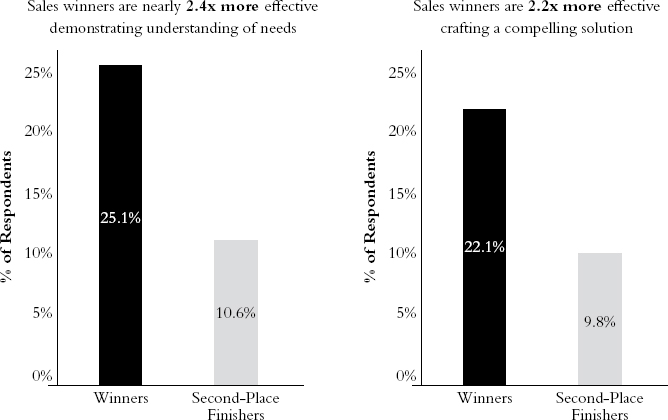
Figure 4.8 Winners Are Better at Understanding Needs and Crafting a Compelling Solution Compared to the Second-Place Finishers
It’s clear the core concepts of solutions in sales remain a necessary component of success, but as we noted in the first chapter, the approach must change in fundamental ways, namely:
- Focus as much on aspirations (gain) as afflictions (pain).
- Emphasize diagnosis of need less and building and demonstrating understanding of need more.
- Don’t expect the solution sales formula to get sellers the win like it used to; it’s just table stakes now, keeping sellers in the race versus getting them across the finish line.
Leading Sales Conversations That Connect the Dots
For years, we at RAIN Group have been teaching sellers how to connect the dots between needs and solutions with our RAIN Selling method. RAIN Selling is a blueprint that helps sellers create and win sales opportunities and unleash their sales potential.
At the heart of RAIN Selling is the acronym RAIN. Along with lending itself as the name of the method, the word RAIN is your guide to leading sales conversations that satisfy all 3 levels (connect, convince, and collaborate) outlined in this book, including connecting with people and connecting the dots between buyer needs and seller solutions.
The acronym RAIN stands for:
- Rapport
- Aspirations and Afflictions
- Impact
- New Reality
Also, the A and the I perform double duty as a reminder to balance Advocacy and Inquiry, and the IN will help you remember to maximize your influence.
For a brief overview of RAIN Selling, see the Appendix. Also, readers of Insight Selling have access to an e-learning lesson covering the basics of RAIN Selling. To view this lesson, go to www.raingroup.com/insightbooktools.
To learn more about how to lead masterful sales conversations that—among other things—will demonstrate how to connect the dots between needs and solutions, spend some time going through the lessons in RAIN Selling Online, and pick up a copy of Rainmaking Conversations.
Before we move along to our next topic, we’d like to highlight one part of RAIN: the A and the I that serve as reminders to balance advocacy and inquiry. Conversations about insight selling often focus on educating with new ideas from the perspective of presenting information. This is certainly important as a core way to share an idea is, literally, to present it. But advocacy is only half the story of connecting the dots and creating insight in the mind of the buyer.
The other half is inquiry.
Asking Questions That Demonstrate Understanding of Need
When it comes to understanding need, sellers generally must ask questions. Inquiry isn’t, however, typically a core concept associated with insight selling. It should be. Whether they realize it or not, sellers are practicing insight selling when they ask questions the right way.
One notable finding from our research was that it was more important to buyers that sellers demonstrate understanding of their needs than it was to diagnose the need itself.b
Perhaps the most common way sellers demonstrate understanding is to summarize and repeat what they heard, something like, “So what I’m hearing is that you think your manufacturing process is bloated and inefficient because of these five reasons. You’ve tried to solve the issues before by hiring a consultant to redesign the processes and implementing ACME software. The consultant wasn’t very good, and the software still hasn’t been implemented, so you’re in the same place you were two years ago. Still, you believe you can achieve a 20 percent improvement in cycle times and 5 percent reduction in cost. As you implement, you’re concerned you’ll go through the whole process again—waste time and money—and still be in the same situation, yes?”
This is good. A good summary can get the buyer to see that a seller gets it. However, a seller’s questions—and the way in which they’re asked—are as much of a determinant of whether a buyer thinks the seller is competent in a given area. Ask questions the right way, and you will improve your chances of demonstrating to buyers that you get it.
Consider this. Researchers at the University of Memphis4 asked more than 100 students to think aloud as they tried to figure out what was wrong with a number of broken devices, including a dishwasher, an electronic bell, a clutch, and a few others.
They found that the questions the students asked as they thought about the device and what could be wrong with it were strong proxies for demonstrating understanding. The quality of the questions the students asked in the service of figuring out what was broken with each device indicated how well they understood the devices.
The students who were most knowledgeable about the actual workings of the devices were prone to ask questions that started with why, why not, how, what if, and what if not.
The researchers matched the students who asked these kinds of questions with tests of competence they later performed. Students with better knowledge asked these kinds of questions. (The students who were less knowledgeable asked questions such as, What kind of dishwasher is it?)
Of course, buyers are not going to test for your competence, but they certainly sense and measure your competence by the strength of the questions you ask. They notice.
As Jack Kline, president and chief operating officer, Christie Digital Systems USA, Inc., put it, “It’s evident in the quality of the questions a seller asks whether they did their homework on us and what we’re trying to get done. That they know their own offerings and how to apply them to my business. The sellers we don’t put much faith in ask shallow questions like they’re trying to check it off on a list, or they didn’t do their homework, or they’re simply out of their depth.”
If you use questions in the right way, not only can you learn what’s going on so that you can then paraphrase and demonstrate understanding with a summary, but you also demonstrate your understanding through the act of questioning itself.
Although it may be less important as a factor in sales success today, you might also deepen the buyers’ understanding of their need or get them thinking about something they hadn’t yet considered. Do either of these and you bring insight to the table.
Asking Questions for Insight Selling
As noted previously, insight selling hinges on the concept of cognitive reframing, or changing how someone thinks about something.
You can do this by presenting (advocacy), but you can also do it with questions (inquiry). More specifically, you can change how people think with disruptive questions. Disruptive questions test buyers’ ideas and assumptions about what’s happening and what’s possible. Disruptive questions make buyers think twice about—and often change—their strategies and agenda for actions.
Disruptive questions push buyers out of their comfort zones. When this happens, buyers often land square in the learning zone—exactly where new thinking and new points of view can help them become more successful.
If you want to educate with new ideas and perspectives, buyers have to be in the mind-set to learn (Figure 4.9).
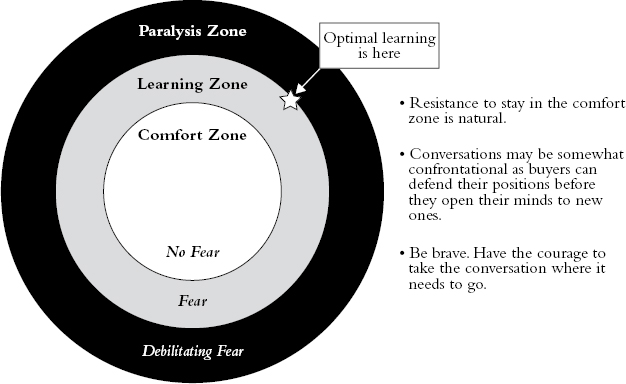
Figure 4.9 Guiding Buyers out of the Comfort Zone
Here are 11 starter questions (and question types) sellers can ask to—as Somers does—dig deep and use in the process of insight selling.
- Why? Why did you settle on this strategy? Why do you say that? Why do A versus B? By asking why, you are asking buyers to justify something. If they can do so convincingly, bully for them! When they can’t provide that justification, the door is opened to change. Sometimes, when buyers respond to the why question, they have an epiphany—a lightbulb moment when insight comes alive. Regardless, when the light turns on, there’s an opportunity for you to help.
- Use caution when you ask why questions. Be careful not to put the buyer on the defensive, and don’t assume that you are right and the buyer is wrong. Deliver with a tone of inquiry and collaborative thinking, not one of questioning buyers’ judgment. If you do the latter, you may find them hardening to defend a position. (If you believe a course of action isn’t the right one, the best strategy is typically just to share your thinking.) Keep the tone collaborative and you’ll find yourself thinking through issues jointly, often coming up with better solutions as a result.
- How? How do you see this situation panning out? How do you think you need to proceed so that this becomes a part of the culture? How might you avoid the challenges, such as X, or Y, or Z, that commonly crop up?
- How questions get people thinking about reality. Sometimes they have strong reasoning for why to do something, but they don’t have a strong plan for how to get things done. When you guide them to think about the how, it can help in many ways. You can help them avoid a problem. They may question the wisdom of doing something because they now see the true difficulties of implementation. They might—or you might—come up with a change to the plan that will make everything work better. In any case, how questions can be very powerful for generating insight.
- What have you tried that hasn’t worked? This question will help you understand their thinking and help you see the gaps between what they know won’t work and what you know will.
- Have you considered . . . ? You may find out they did consider it, but perhaps they didn’t approach it correctly or didn’t know about a new advancement in the area. Maybe they were unaware better options existed. Now you can bring these options to the table. They might even say, “Well, what should I have done?” or, “What do you think?” Their response gives you the opportunity to bring insight to the table.
- What will the impact be if you did this? Here you’re essentially asking, “What if?” about the financial return. Answers here can show:
- They see the impact and why it’s important (good!)
- Their perception of the impact grows as they think it out (great!)
- They see the impact as too small for action (you can show them it’s bigger, assuming they’re missing something)
- They don’t know (you can help them figure it out)
- What will happen if you don’t act? This is the opposite of a what if question. In other words, “What if not?”
- Asking this question gets buyers thinking of the negative consequences of inaction. They may work the answer out themselves (“We’ll bleed cash!” “Turnover will be unsustainably high!”), and as a result their perception changes. Or perhaps they need your guidance to see the negative consequences of inaction. Either way—insight.
- What’s possible? What’s possible in terms of results? What’s possible in terms of action? What’s possible in terms of solution choices? Like impact, whatever you uncover with this question gives you the chance to then alter their perception of the situation.
- How do you know that? Buyers often give so-called facts without foundation, or they may give facts with foundation that once was true but isn’t anymore. By asking for the reasoning behind a statement, you can help the buyers question the fundamental basis for their assumptions.
- What do you think is missing? This is the question that often gets a response of, “Good question!” Or it causes people to climb up on their soapboxes, decrying what should be but isn’t. Openings for insight all around.
- The follow-up question(s). Ask a question and you may get a somewhat solid, somewhat thorough, and somewhat convincing answer. Keep pressing, though, and somewhat solid answers and arguments frequently break down.
- Simply asking why a few more times can open the door for entire new paths of insight for the buyer. You can bring insight to the underlying cause of the problem and create a better and more durable solution.
These types of questions lead buyers to say (or at least, think) things, such as, “Well, I wasn’t thinking of it like that.” When they do, you’ve achieved cognitive reframing: influencing the way they think and what they believe.
Influence buyers’ thinking with your thoughtful inquiry, and you can then influence their agendas for action. The trend in selling has been to do this only through advocacy. But never forget or dismiss the power of inquiry to do the same.
Finally, asking good questions and not just demonstrating understanding of—but truly understanding—the buyer’s need is necessary to craft a compelling solution. Let’s assume for a minute that you do. Most sellers look at their solution and think, “This is great. It’s perfect. This is exactly what they should do, and they’d be crazy not to do it.”
The seller may think this. It may, indeed, be true, but it’s not compelling until the buyer agrees it’s compelling. To reach this point, you have to convince buyers this is the case, which is the subject of our next chapter.
Chapter Summary
Overview
- Connecting with people and connecting the dots between their needs and seller solutions are both vital to sales success.
- Sellers can’t apply insight selling without connecting—buyers either don’t want to interact with these sellers because of personal dislike or mistrust or dismiss them when they believe sellers don’t get it because they didn’t seem to understand needs or craft a compelling solution.
Key Takeaways
- Connect with people: Sellers with personal connections already developed with buyers find the door is open to provide business value.
- If personal connections don’t already exist, then build them to lay the foundation for trust and open the door to providing maximum business value.
- The more trust you build, the more buyers are open to gaining insight from you.
- Buyers report sales winners make strong personal connections at more than double the rate of second-place finishers.
- Establish yourself as a source of insight from the moment of your first interactions with buyers.
- The more insight sellers and delivery teams bring to the table, the more the buyers value sellers and their colleagues, and the higher on the relationship strength scale the sellers rise.
- Connect the dots: The core concepts of solutions in sales remain a necessary component of success, but (1) focus as much on aspirations (gain) as afflictions (pain), (2) emphasize diagnosis of need less and building and demonstrating understanding of need more, and (3) remember that the solution sales formula is necessary but not sufficient to win.
- To lead masterful sales conversations, follow the RAIN model: rapport, aspirations and afflictions, impact, and new reality.
- It is more important to most buyers that you demonstrate understanding of their needs than it is to diagnose the need itself.
- To understand need, you generally must ask questions.
- Insight selling hinges on the concept of cognitive reframing, or changing how someone thinks about something. You can do this by presenting (advocacy) and by asking questions (inquiry).
- Ask disruptive questions to push buyers out of their comfort zones and into the learning zone. If you want to educate with new ideas and perspectives, buyers have to be in the mind-set to learn.
- Disruptive questions will (1) test buyers’ ideas and assumptions about what’s happening and what’s possible, (2) make buyers think twice about their strategies and agenda for action, and (3) push buyers out of their comfort zones.
